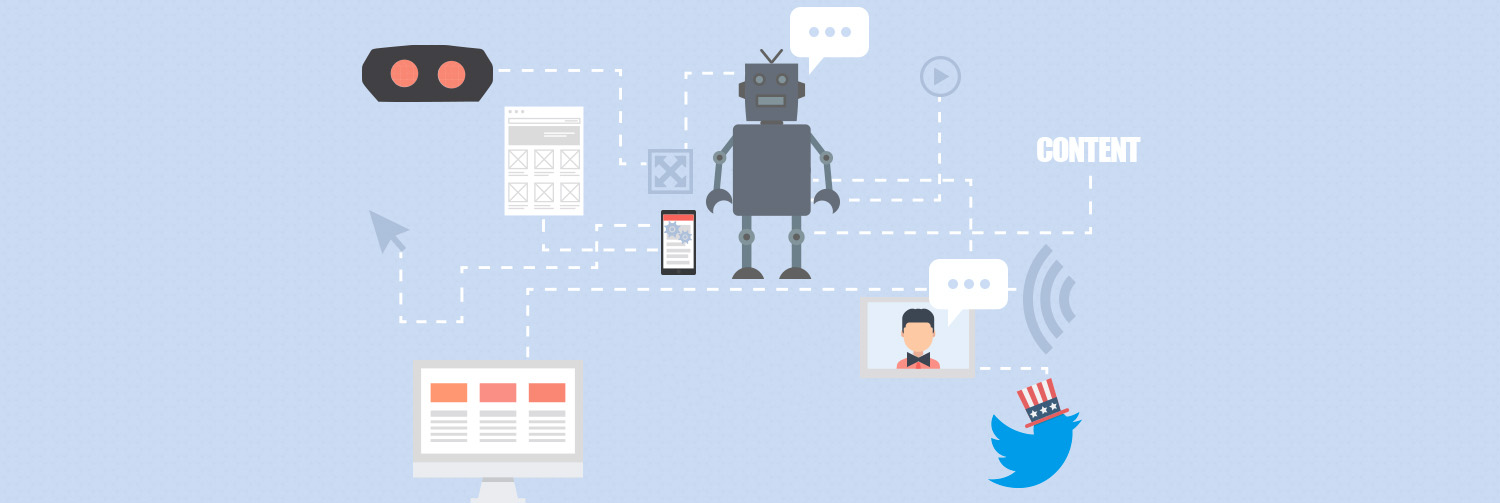
Questions about the future of work are on the rise, as automation and artificial intelligence become more pervasive in our lives. For example, the newspaper articles you’ve read this week might have been written by bots.
These questions deal with the economic, social, and environmental impact of automation technologies. Whether we consider this impact as positive or negative, the change is deep. It challenges the traditional productivism model that has been so far applied to business but also society and nature, where resources are transformed to create consumable products. Mass digitization changes this model into a more circular one, where production output can become input for a new cycle, because of the interconnections created by digital technologies.
Some non-profit organizations have started to frame the skills that are now needed as a priority in education and training, so that students are prepared for the complexity of the digital economy. One of these organizations, called the Partnership for 21st Century Skills (or P21), listed 7 key skills. As an assistant professor in technical communication at Université de Paris, I have been looking at how our curricula were addressing the need for specific skills. And my impression was that all of these skills were covered in content training:
- Critical thinking: verifying the validity of sources of information, checking assumptions.
- Creativity: expressing concepts through media.
- Communication: writing in plain language.
- Collaboration: working with multiple groups.
- Cross-cultural understanding: delivering information to diverse audiences, having the courage to reach out.
- Computing and tech literacy: using digital tools to create and publish content.
- Curiosity and self-guidance: learning continuously, being curious.
It seemed like content professionals, until now probably not seen as key resources in organizations, were actually very well equipped for the new economy. But our students still had concerns about the impact of connected objects and artificial intelligence on their future jobs.
The lack of awareness for content professions in France also makes it difficult for students to picture their career path. In areas such as journalism and translation, automation has already taken a toll, so I wanted to provide a clear framework that could help content professionals view their options.
The framework would show the different types of content work, where automation could help or go wrong, and the skills and qualities students would need to develop.
Framing the content profession
To build the framework, I first looked at the existing European skills framework for technical communication (TecCOM Frame). I then extended it to include skills for a wider spectrum of areas, to reach across our traditional professional separations (brand, marketing, HR, journalism, social media, tech comm, and so on). I referred to Colleen Jones’ The Content Advantage, Meghan Casey’s Content Strategy Toolkit, and Rachel McConnell’s Why you need a content team and how to build one, each providing a different perspective on current and future content roles. I also looked at organizational patterns suggested by Peter Merholz and Kristin Skinner in Org Design for Design Orgs.
Then I set up a survey asking to rate the importance of the skills that I had gathered, and to assess the impact the technologies on the content profession as a whole. I sent this survey to content marketing, technical communication, knowledge management, and content strategy communities, and got 50 responses. These responses–and the comments–helped me refine the list of skills and assess their importance. They also revealed how the content community perceives automation technologies.
Beyond job titles: 6 dimensions to the content discipline
I grouped the skills into 6 dimensions: DATA, DIRECTION, DESIGN, DEVELOPMENT, DELIVERY, and DIALOGUE. A dimension corresponds to an area of focus for a content professional.
I wanted to move beyond job titles because, as Rahel Bailie illustrated in her 3-part article about content roles and skills, it depends on what a given community associates to that job title–and we end up with unhelpful debates around different understandings of say, “content strategist”.
There is not one dimension that is more important than the others. They are interdependent. Each dimension provides an output that can be used as input by another dimension, and a person’s role can span more than one dimension.
Let’s go through them in the order in which you will find them in the content lifecycle.
DATA
The DATA dimension focuses on the analysis of audiences and their behavior. This analysis is grounded on ethics and empathy.
The DATA dimension combines quantitative data (usage metrics) and qualitative data (market research, user research, and usability testing). It requires professionals to wrangle statistics, interviews, field observations, and reports into digestible information.
| Focus | Audience |
|---|---|
| Job Titles: | Business analyst, Information architect, Data scientist, Taxonomist, UX researcher, Market researcher |
| Usually In: | Marketing, Design, Support |
| Favorite Quote: | “Data, I think, is one of the most powerful mechanisms for telling stories. I take a huge pile of data and try to get it to tell stories.” – Steven Levitt, Co-author of Freakonomics |
| Content Skills | 21st Century Skills |
|---|---|
|  |
DIRECTION
The DIRECTION dimension focuses on the intent and value propositions to be conveyed through content at every point of the customer journey. This dimension also involves ensuring that strategy is properly executed.
| Focus | Intent |
|---|---|
| Job Titles: | Creative director, Content strategist, Head of content, Brand strategist, Editor-in-chief, Editor, Content marketing manager |
| Usually In: | Marketing, Product management, Communications, Consulting |
| Favorite Quote: | “A satisfied customer is the best strategy of all.” – Michael LeBoeuf |
| Content Skills | 21st Century Skills |
|---|---|
| 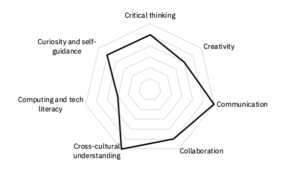 |
DESIGN
The DESIGN dimension focuses on experience, making sure that people will get the information they need to understand and interact with systems.
| Focus | Experience |
|---|---|
| Job Titles: | Information architect, Content designer, Content strategist, UX writer |
| Usually In: | Design, Development, Sales, Consulting |
| Favorite Quote: | “A designer knows he has achieved perfection not when there is nothing left to add, but when there is nothing left to take away.” – Antoine de Saint Exupéry, French writer and poet |
| Content Skills | 21st Century Skills |
|---|---|
|  |
DEVELOPMENT
The DEVELOPMENT dimension focuses on expression, using the right language to help people understand, adopt, and use systems.
| Focus | Expression |
|---|---|
| Job Titles: | Writer, Editor, UX writer, Copywriter, Content developer, Content designer, Content strategist, Visual designer, Video producer, Translator |
| Usually In: | Marketing, Development, Sales, Design, Independent |
| Favorite Quote: | “When your story is ready for rewrite, cut it to the bone. Get rid of every ounce of excess fat. This is going to hurt; revising a story down to the bare essentials is always a little like murdering children, but it must be done.” – Stephen King |
| Content Skills | 21st Century Skills |
|---|---|
| 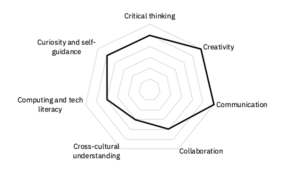 |
DELIVERY
The DELIVERY dimension focuses on operations, making sure the right infrastructure and processes are in place to enable the delivery of content at the right time, place, and in the right language.
| Focus | Operations |
|---|---|
| Job Titles: | Content manager, Information architect, Project manager, Content engineer, Translation manager |
| Usually In: | Marketing, Development, Support |
| Favorite Quote: | “If you automate a mess, you get an automated mess.” – Rod Michael |
| Content Skills | 21st Century Skills |
|---|---|
|  |
DIALOGUE
The DIALOGUE dimension focuses on relationships. It aims at building conversations within a community, turning content into discussions and responding to feedback and questions.
| Focus | Relationships |
|---|---|
| Job Titles: | Community manager, Social media strategist, Editor, Knowledge manager, Customer success manager |
| Usually In: | Marketing, Support, Sales |
| Favorite Quote: | “People relate to other people, not sales pitches and marketing jargon.” – Janet Fouts |
| Content Skills | 21st Century Skills |
|---|---|
| 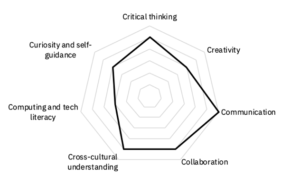 |
The impact of automation on content disciplines
Each dimension of content is affected by automation. Automation will in some ways make the lives of content professionals easier (push-button omnichannel content publication) but it could very well go wrong too (creepy chatbots replacing talented writers).
Content professionals will need to focus where their true value is—as an article by McKinsey states, we need to “take the robot out of the human”, and work to be tech-savvy enough to make automation work for us, humans. The real challenge will be in learning how to cooperate with machines. Francesca Rossi highlights this point in the AI Index: “It is also important to move from human vs machine to human+machine environments, if we want AI to augment human intelligence rather than replace it. Metrics to show the advancements in this could be number of non-autonomous systems where humans are the final decision makers but are supported by machines.”
Let’s see how we can build this level of cooperation in each of the content dimensions.
DATA
What automation will bring
Insight: Better tools for collecting, consolidating, presenting, and analyzing data. Low-code tools for modeling data and creating metadata models.
Where it could go wrong
We stop talking to people because we have data. Privacy issues: we gather data without consent on the grounds that it will help inform our choices. Bias: we make data tell what we want it to tell us, by inferring too much from incomplete data or by creating models that reflect only one perspective.
How we cooperate
Finally rid from the hassle of fiddling with Excel, we focus on talking to people, so that we can contrast field experience against data. The bottom-up (data first, model second) and top-down (model first, data second) approaches eventually complement each other.
DIRECTION
What automation will bring
Flexibility: Customer journey tracking tools will make it easier to track and audit how the strategy rolls out, and to adjust course as needed.
Where it could go wrong
We neglect strategy because operations are automated. We lose opportunities to innovate by focusing on efficiency only. The expression of the strategy ends up being constrained by the limits of the tools.
How we cooperate
Free from the need to track every minute detail of execution and reassign roles and responsibilities manually, we focus on cross-disciplinary communication and collaboration around how to best deliver business value to customers. Information mining systems might even make it easier to see where collaboration should happen.
DESIGN
What automation will bring
Consistency: Low-code tools for designing applications make it easier to create consistent experiences. Content models become part of the design systems that underlie application development tools.
Where it could go wrong
Dark patterns make it into design systems and content models, and get applied across channels. And again reliance on automation could stifle innovation.
How we cooperate
Because there will be no need to ensure consistency across applications in terms of layout and looks, we will be able to focus on making content relevant.
DEVELOPMENT
What automation will bring
Quality: Tools for making better quality content. The content that doesn’t require craft (summaries, links to related information) will be automated.
Where it could go wrong
Because it will be very easy and cheap to create a lot of bad content, businesses might lean for that option, with tremendous impact on the environment and our brains.
How we cooperate
No longer needing to learn the style guide by heart, chase broken links, and bang out summaries, content developers can focus on their craft and create useful, relevant content.
DELIVERY
What automation will bring
Agility: Automation of scripts and processes, and delivery into new interfaces. Continuous delivery model applied to the content supply chain: updates can be made at any time, anywhere. Translation automation.
Where it could go wrong
Because we can, doesn’t mean we should: risk of generating content pollution, publishing everywhere and anywhere.
How we cooperate
As manual builds and tweaks become a thing of the past, we focus on enabling collaboration across the supply chain, to identify weak signals and better manage risks.
DIALOGUE
What automation will bring
Relevance: Basic customer interaction are automated: no need to manually handle a growing number of requests. Blockchain underlie community relations and transactions. Customer Relationship Management systems make it possible to get customer context at every interaction point.
Where it could go wrong
Impersonal, creepy automated conversations become the norm.
How we cooperate
With access to information about the customer context, and no need to manage all micro-conversations, we can focus on high-quality interactions, through meaningful and helpful conversations.
Putting content skills to work for a better future
The content discipline is multidimensional, and it requires a combination of skills across all dimensions. Esko Kilpi suggests that we need to shift our focus from competencies to agency, meaning that instead of achieving unicorn skills at an individual level, our goal should be to create systems of interconnected skills.
For training, it means enabling students to explore all content dimensions, so that they can thrive anywhere in the system.
For staffing, it means looking at content in the organization not necessarily as a single group of people, but as a 6-dimensional system where skills might come from a variety of entities, including machines. When hiring, you would have to assess how the new hire will make the system more efficient as a whole.
Parallel to automation change, climate change poses an existential threat and demands that we reconsider the values that come from the productivism era. We now have the technological means to automate mass production of content. Do we want to use our skills to work as publishing machines, contributing to content pollution and disinformation? Or would we rather create resilient systems in which machines and humans collaborate towards the same goal of making content useful and usable?
Events, Resources, + More
The Ultimate Guide to End-to-End Content
Discover why + how an end-to-end approach is critical in the age of AI with this comprehensive white paper.
The Content Advantage Book
The much-anticipated third edition of the highly rated book by Colleen Jones is available at book retailers worldwide. Learn more!
20 Signs of a Content Problem in a High-Stakes Initiative
Use this white paper to diagnose the problem so you can achieve the right solution faster.
Upskill with Content Science Academy
Training for modern content roles through on-demand certifications + courses or live workshops.

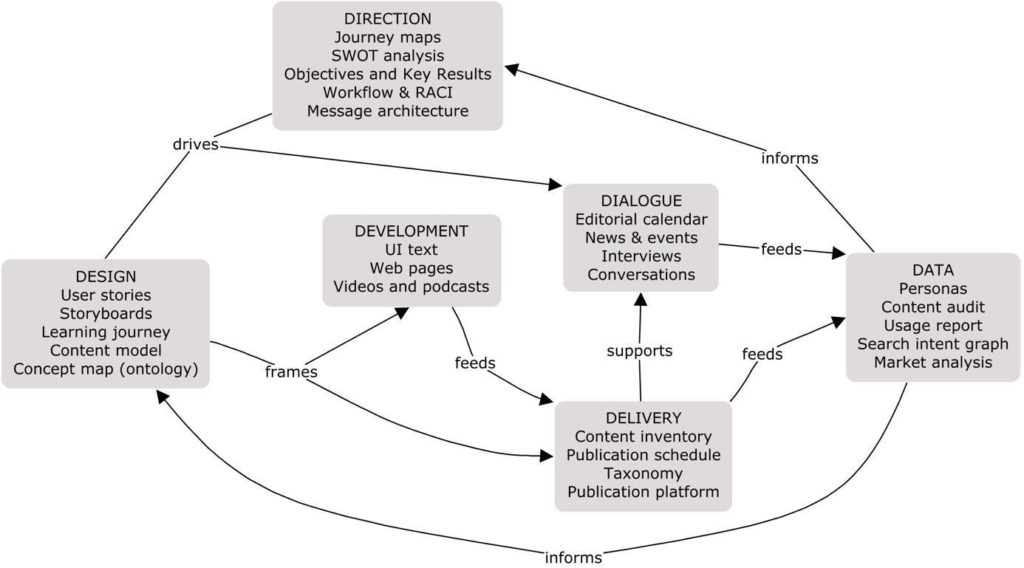





Comments
We invite you to share your perspective in a constructive way. To comment, please sign in or register. Our moderating team will review all comments and may edit them for clarity. Our team also may delete comments that are off-topic or disrespectful. All postings become the property of
Content Science Review.